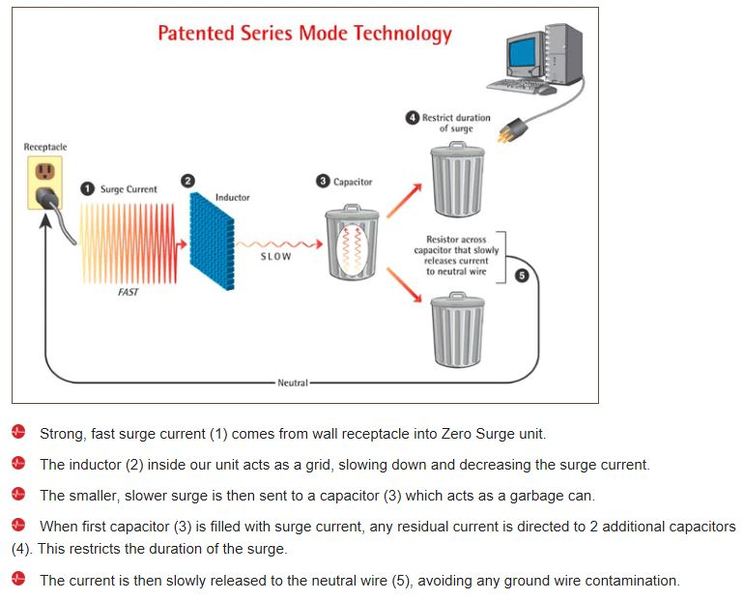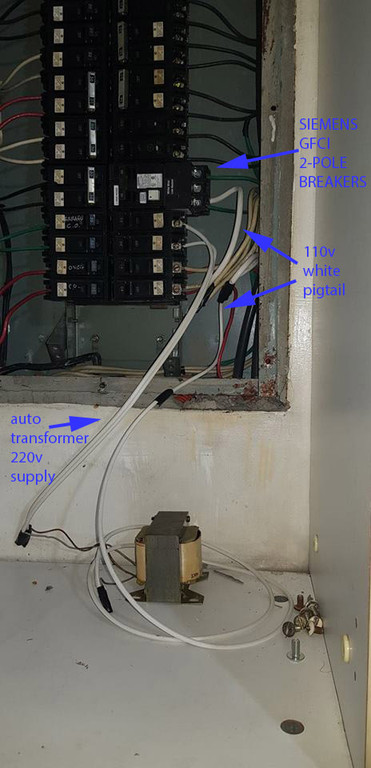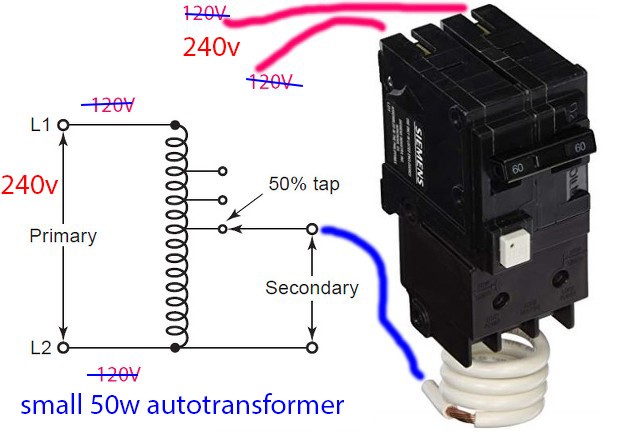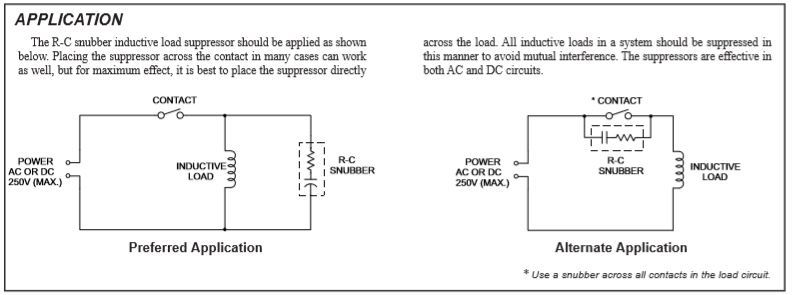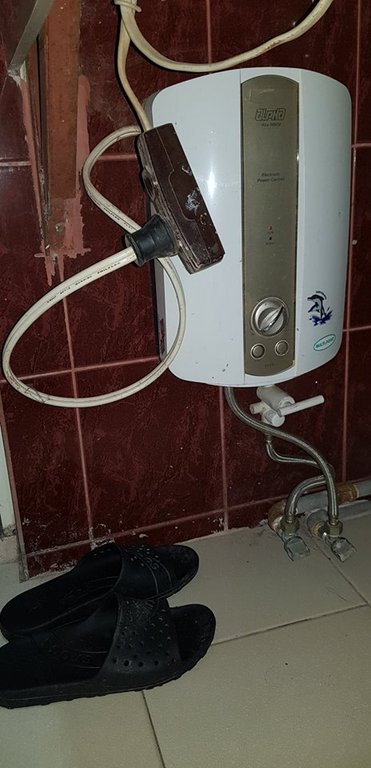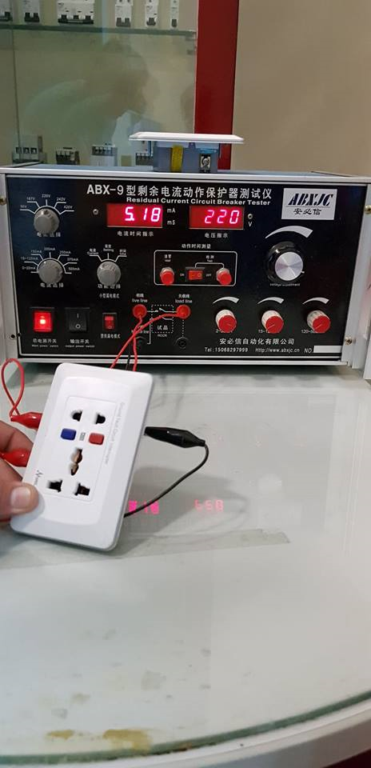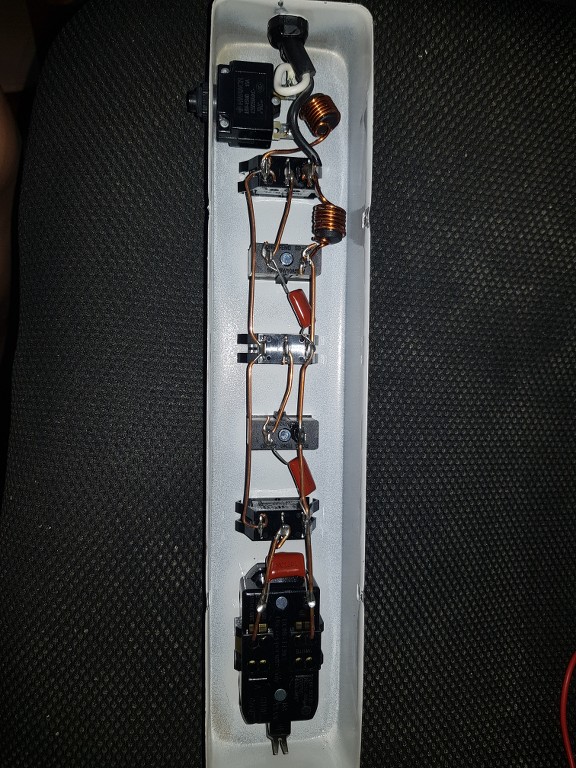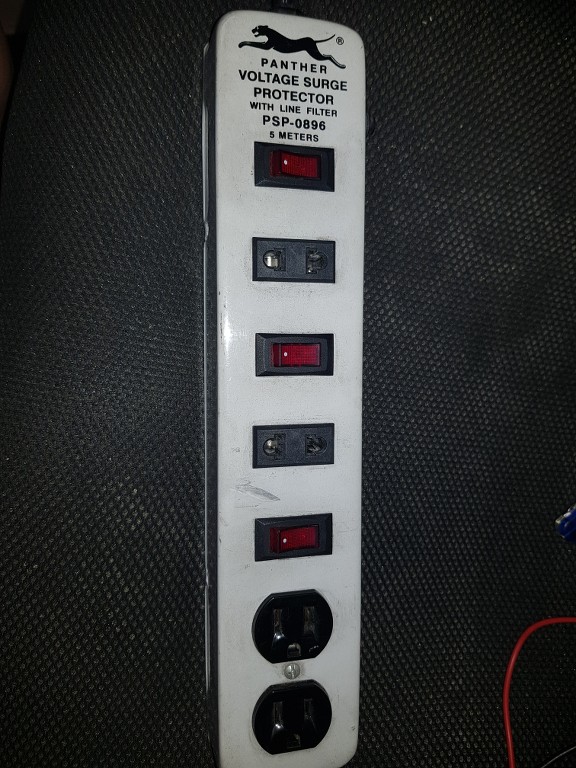I am pondering the following:
The GFCI chip is powered by connection to the AC line through a resistor, a diode, and the 'trip solenoid' (which I presume is supposed to do double duty as a filter choke). The capacitor from pin 6 is a decoupling capacitor to filter the rectified AC.
The circuit has a residual current detection circuit that uses an op-amp connected to a sense coil, using standard op-amp feedback through Rset. The output of this amplifier connects to a pair of comparitors so that when the output of the RCD is high enough the system is triggered.
Also connected to the _output_ of the op-amp is the 'grounded neutral detection' circuit. The way this works is that if the neutral is grounded upstream of the GFCI, the combination of the ground-neutral loop, the various capacitors and the second toroid creates a feedback path that makes the sense op-amp oscillate and drive a detectable current through the ground-neutral loop.
I am wondering if particular inductive loads can interact with the grounded neutral detection, and dump current into pin 1 via the power supply connection, and trip the circuit not by creating an actual residual current, but rather by creating a current spike at pin 1 of the chip.
Tersh, if you want to continue to research this, I think that the next step would be to build a proper spice model of the circuit, and simulate what happens with various inductive loads, _or_ probe the circuit using a good oscilloscope. You might also hire someone to do this research.
Very, very interesting, since you have clearly demonstrated a case where there is no 'residual current', but you are consistently tripping this circuit.
-Jon
First. My Siemens GFCI Breaker doesn't trip after 3 days with refrigerator on it. Good. While last year with the FM2141 chip GFCI outlet. It tripped twice a day or so hence I thought it was the fridge that was the problem.
Btw.. My course in college was electronic engineering. Spent 5 years in it. So I am supposed to be familiar with it. But that was long ago and changed interests to the medical field and then to physics now. Shaded pole motors and Leviton GFCIs are very common in the US. Can people with these try them on their oscilloscope? Also there is this person with electric fan that trips on his two Leviton GFCI. He has a theory how it occurs that it's because each of the two wire has actual inbalance current. Please comment on his theories and what could be wrong with it. He said in:
https://www.justanswer.com/electrical/2g0be-gfci-outlet-trips-even-when-clear.html
"
It seems very unlikely that the problem is caused by a loose connection because the nuisance trips occur only when one opens a switch to the load, not at random as one would expect if the problem were caused by a loose connection.
After giving the problem a good deal of thought, I have concluded that it is due to a transient that occurs when the load is switched off. It does not occur when the load is purely resistive (e.g., an iron). It occurs when an inductive load , such as a
motorAfter giving the problem a good deal of thought, I have concluded that it is due to a transient that occurs when the load is switched off. It does not occur when the load is purely resistive (e.g., an iron). It occurs when an inductive load , such as a
is switched off. In the GFCI, the two wires that feed the load pass through a small current transformer that produces no output if the currents in the two wires are equal in magnitude and opposite in direction. In other words, the GFCI trips if the net current through the transformer is not zero.
When the load is purely resistive, the currnet in both wires falls to zero instantaneously when the switch is opened. Hence the GFCI does not trip.
Now suppose that the load is inductive (equivalent to a resistance in series with an inductance). When the switch is opened, one leg of the circuit consists of only a wire and hence the current in it falls instantaneously to zero when the switch is opened. In the leg of the circuit containing the load , what happens depends upon the currrent in the indictance at the moment when the switch opens. (Remember that the current in the inductance varies sinusoidally before the switch opens.) If the current is zero when the switch opens, nothing more happens and the GFCI does not trip because the currents passing through the transformer are equal and opposite at all times. If the current in the inductance is not zero when the switch opens. it does not fall to zero instantaneously when the switch opens because of the relationship E=L di/dt, which says that the voltage across the inductor would have to be infinite to cause the current to fall to zero instantaneously. Therefore, one concludes that the current in the wire to the load does not fall to zero instantaneously and hence for a brief time there is an imbalance in the currents in the two wires passing through the transformer and the GFCI trips.
This analysis indicates that the GFCI trips only some of the time when a motor load is switched off. "
When the load is purely resistive, the currnet in both wires falls to zero instantaneously when the switch is opened. Hence the GFCI does not trip.
Now suppose that the load is inductive (equivalent to a resistance in series with an inductance). When the switch is opened, one leg of the circuit consists of only a wire and hence the current in it falls instantaneously to zero when the switch is opened. In the leg of the circuit containing the load , what happens depends upon the currrent in the indictance at the moment when the switch opens. (Remember that the current in the inductance varies sinusoidally before the switch opens.) If the current is zero when the switch opens, nothing more happens and the GFCI does not trip because the currents passing through the transformer are equal and opposite at all times. If the current in the inductance is not zero when the switch opens. it does not fall to zero instantaneously when the switch opens because of the relationship E=L di/dt, which says that the voltage across the inductor would have to be infinite to cause the current to fall to zero instantaneously. Therefore, one concludes that the current in the wire to the load does not fall to zero instantaneously and hence for a brief time there is an imbalance in the currents in the two wires passing through the transformer and the GFCI trips.
This analysis indicates that the GFCI trips only some of the time when a motor load is switched off. "

